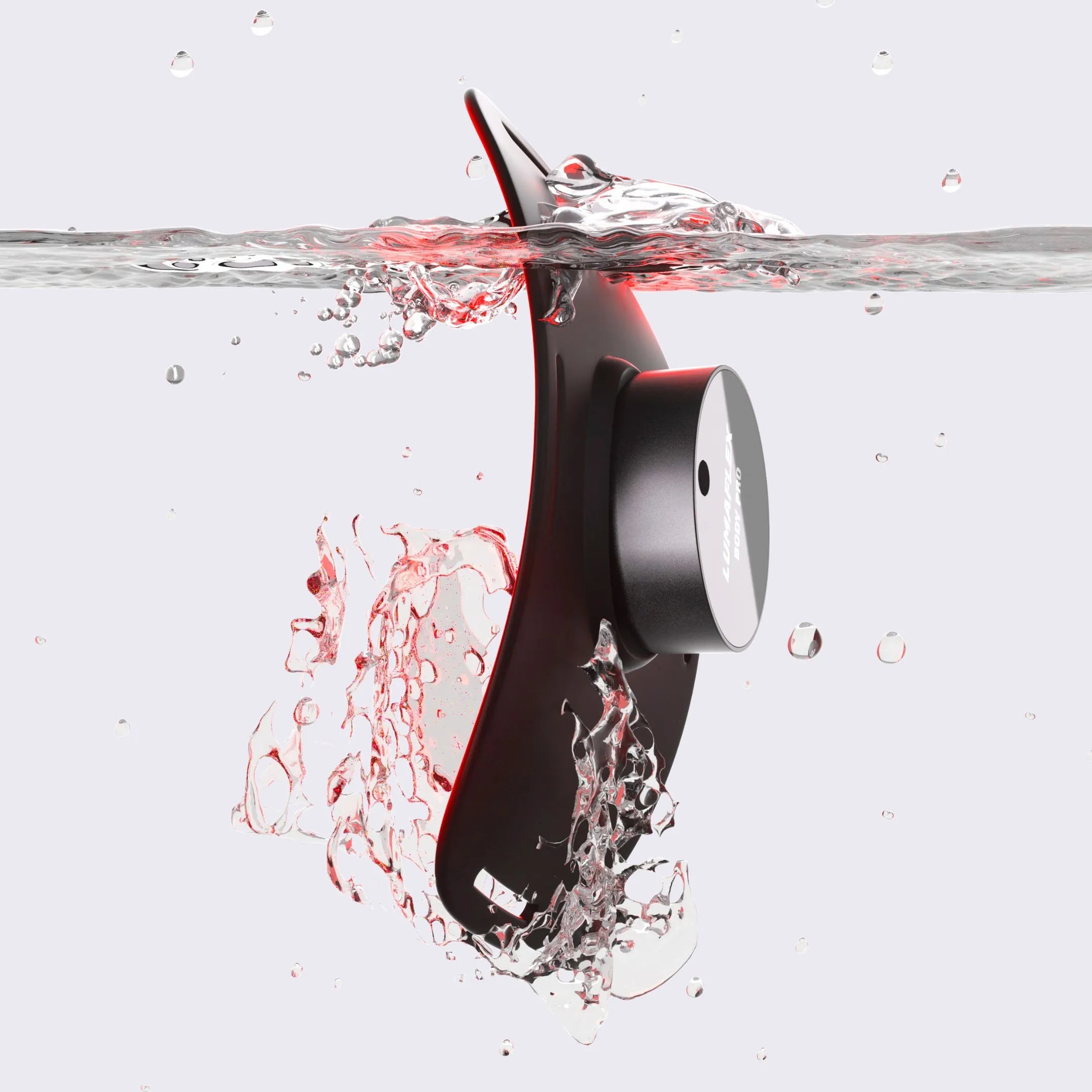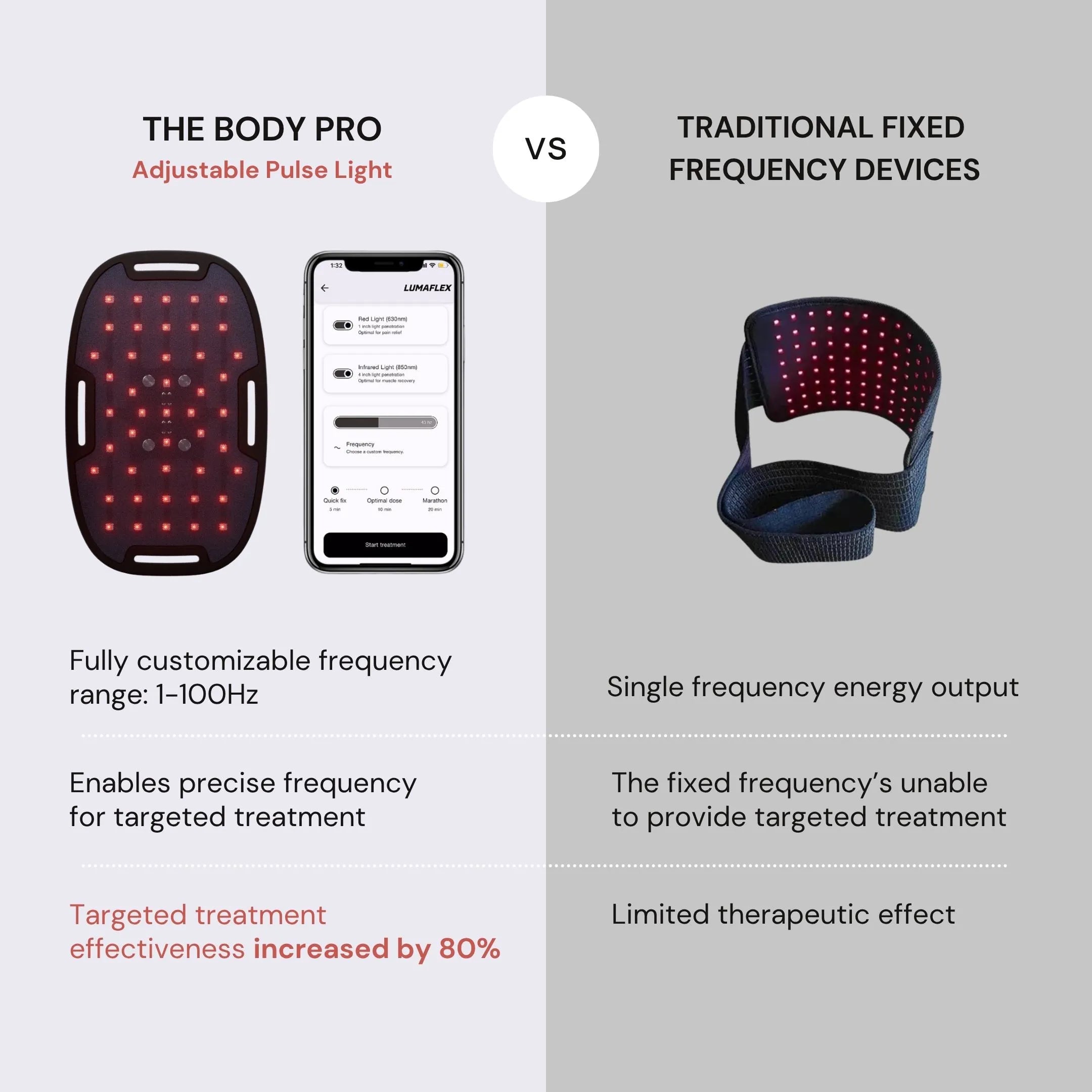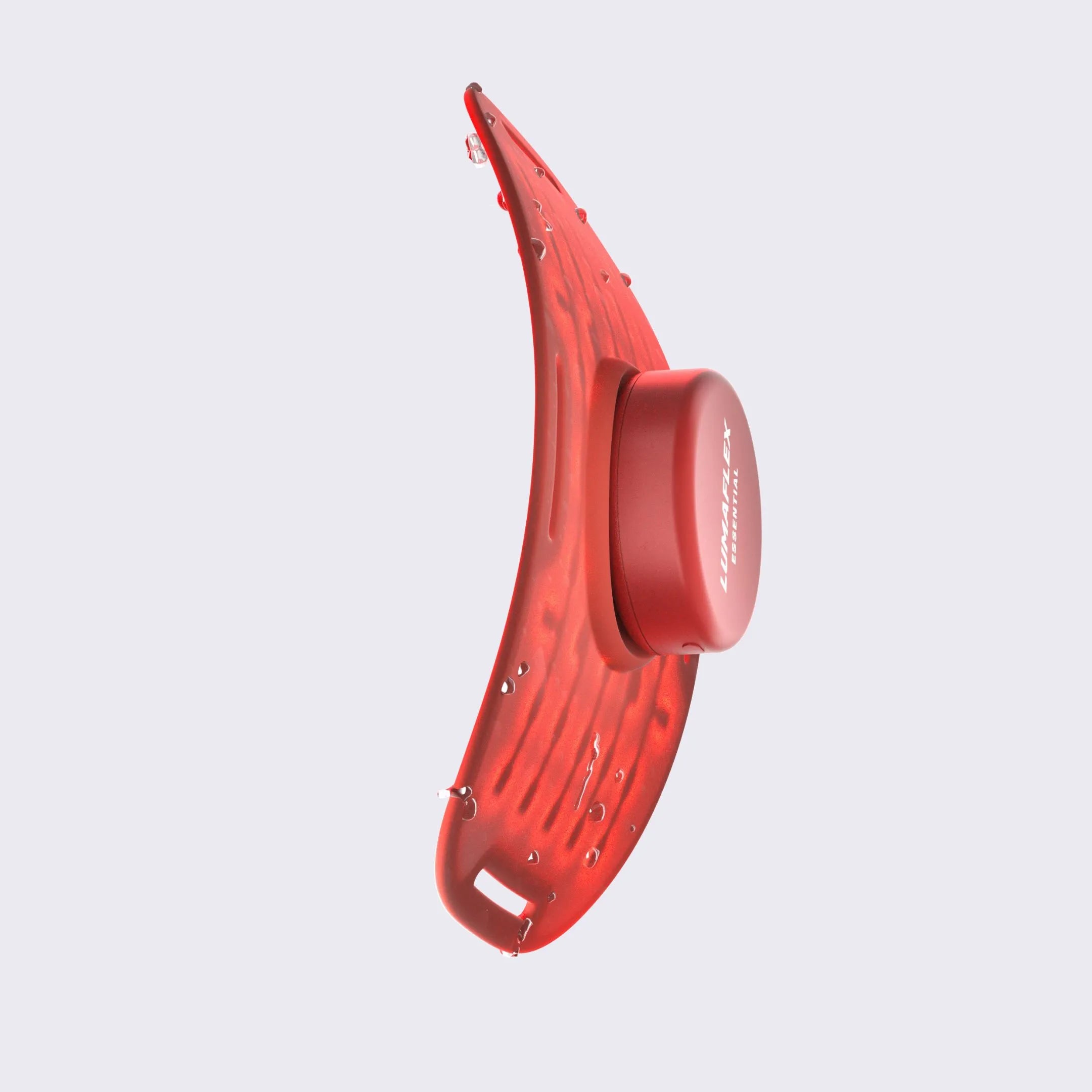Why Choose Lumaflex Over Traditional Red Light Panels?
Traditional red light panels dominated the market for years, but their fundamental design limitations are becoming increasingly apparent as newer technology emerges. While these stationary devices served as an important stepping stone in light therapy adoption, they represent an outdated approach to what should be a personalized, precise treatment modality.

The most critical flaw of traditional panels lies in their distance dependency. When you position yourself six inches away versus eight or twelve inches from a panel, the amount of therapeutic light your body receives changes exponentially due to the inverse square law. This variability makes treatment outcomes unpredictable and often suboptimal. You're essentially guessing whether you're receiving an effective dose, which undermines the entire therapeutic process.
Lumaflex revolutionizes this approach through direct skin contact technology. By maintaining consistent contact with your body, the device delivers a known, precise dose every single session. This eliminates the guesswork and ensures you receive the exact therapeutic energy needed for optimal results. The difference is like comparing a precision instrument to a general-purpose tool.
Mobility represents another fundamental advantage. Traditional panels confine you to a single location, often requiring dedicated space and limiting when and where you can receive treatment. Lumaflex's waterproof, portable design transforms red light therapy into a truly flexible wellness tool. Whether you're at the gym, traveling, or even in the shower, consistent treatment becomes effortless. This convenience directly translates to better compliance and superior long-term results.
The therapeutic depth achieved by Lumaflex's dual-wavelength technology surpasses what most traditional panels can offer. While standard panels primarily provide surface-level treatment, Lumaflex's 850nm near-infrared light penetrates deep into muscle and joint tissue where chronic pain often originates. Combined with 630nm red light for surface benefits, this comprehensive approach addresses multiple tissue layers simultaneously.
Traditional panels also rely on static light delivery, essentially using yesterday's technology for today's problems. Lumaflex incorporates dynamic pulse light control and Bluetooth connectivity, allowing for customized treatment protocols that adapt to individual needs. This smart technology approach represents the evolution from one-size-fits-all to personalized therapeutic care.
The results speak for themselves. Backed by over 8,000 clinical studies and with 89% of users reporting significant pain relief, Lumaflex doesn't just match traditional panel effectiveness—it consistently exceeds it. This isn't marketing hyperbole; it's the inevitable outcome when precision engineering meets therapeutic innovation. The choice isn't really between two comparable options—it's between embracing the future of red light therapy or settling for outdated technology.

























